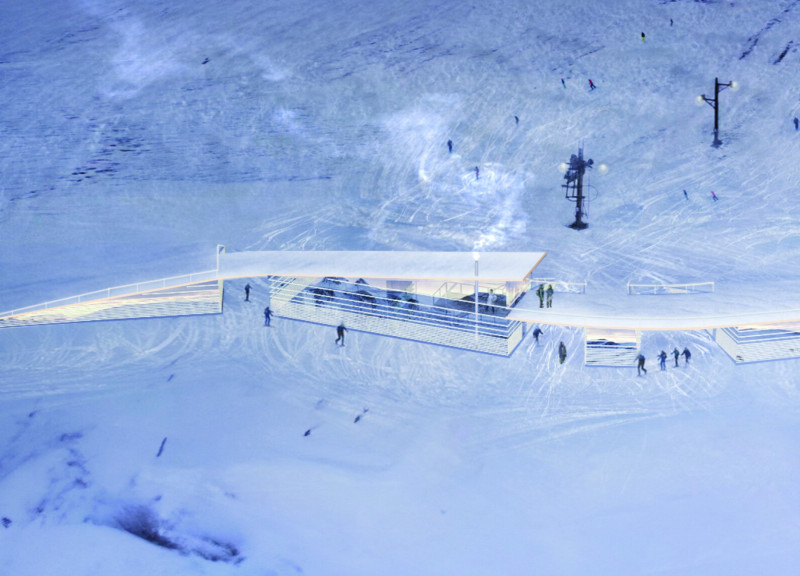5 key facts about this project
The architectural design emphasizes openness and transparency, with large expanses of glazing that invite natural light to permeate the interior spaces. This use of glass serves multiple purposes, enhancing energy efficiency while establishing a connection between indoor and outdoor environments. The careful placement of windows and openings not only maximizes views of the surrounding landscape but also creates dynamic interactions between the spaces within the building and those outside, fostering a sense of community and engagement.
The project’s function is carefully defined, catering to a specific user base while being adaptable to future needs. This adaptability is a hallmark of thoughtful architectural design, allowing spaces to evolve alongside their occupants. The layout is organized to facilitate flow and usability, with key areas such as communal spaces, private zones, and transition areas strategically aligned to enhance user experience.
Materiality plays a crucial role in the project, as selected materials communicate both durability and aesthetic appeal. The design incorporates a combination of concrete, steel, and natural wood, each chosen for its specific properties and contribution to the overall vision. Concrete provides a robust structural foundation that ensures longevity, while steel elements introduce an understated elegance through their lightweight and sleek profile. Natural wood accents soften the design, introducing warmth and texture that contrast with the more industrial materials, creating a balanced and inviting atmosphere.
Another significant aspect of the design is the incorporation of sustainable practices. The architecture employs passive solar principles and energy-efficient technologies, which reflect an increasing awareness of environmental responsibility in contemporary design. Features such as green roofs, rainwater harvesting systems, and the use of locally sourced materials not only minimize the project's ecological footprint but also serve to educate and inspire occupants about sustainable living.
Unique design approaches are evident throughout the architecture. The integration of indoor and outdoor spaces is particularly noteworthy, with terraces and balconies that extend living areas into the naturally landscaped surroundings. This blurring of lines between inside and outside invites users to interact with the environment and encourages a lifestyle that values outdoor engagement.
Moreover, the structural form may incorporate elements that challenge traditional notions of architecture, utilizing dynamic shapes or configurations that enhance both aesthetic appeal and functionality. The facade may exhibit a rhythmic pattern that reflects the local context, drawing inspiration from adjacent buildings or local cultural motifs, thus contributing to a cohesive architectural dialogue within the neighborhood.
The consideration of light and shadow also plays a pivotal role in the design, with overhangs and shading devices strategically placed to control solar gain while accentuating the building’s silhouette throughout the day. This thoughtful manipulation of natural elements adds to the building’s character, ensuring that it evolves visually over time.
This architectural project represents a broad understanding of contemporary design principles, merging practicality with a profound appreciation for context and sustainability. Every detail, from the selection of materials to the layout of spaces, has been meticulously thought out to create an environment that supports its intended use while respecting its surroundings. The innovative approaches employed in the design are significant for anyone interested in modern architecture, making this project a noteworthy case study.
For those seeking to delve deeper into the specifics of this project, exploring architectural plans, architectural sections, architectural designs, and architectural ideas will provide comprehensive insights into the design intentions and execution. Engaging with the finer details in these areas will enhance understanding of the intricate connections between the various elements that comprise this unique architectural achievement.


























